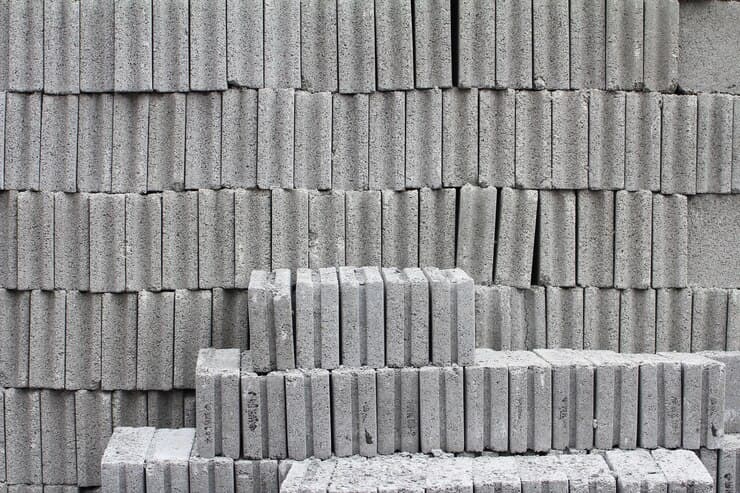Concrete blocks are commonly associated with construction projects, but their versatility extends far beyond building walls and foundations. In landscaping, concrete blocks offer practical, durable, and aesthetically pleasing solutions. From garden borders to outdoor furniture, these materials can transform outdoor spaces while remaining cost-effective and sustainable. This guide explores creative ways to use concrete blocks in landscaping and provides tips for maximizing their potential.
Understanding the Versatility of Concrete Blocks
Concrete blocks are strong, long-lasting, and available in various sizes, shapes, and finishes. Their adaptability makes them ideal for a wide range of landscaping projects, whether for functional purposes or decorative accents.
Types of Concrete Blocks for Landscaping
- Standard Concrete Blocks
- Standard blocks are commonly used for raised beds, garden walls, and edging. Their solid construction ensures durability and stability for both structural and decorative purposes.
- Hollow Concrete Blocks
- Hollow blocks provide additional design flexibility. Their cavities can be filled with soil, gravel, or plants, allowing for creative vertical gardens or modular planters.
- Decorative Concrete Blocks
- Blocks with textured or patterned surfaces add a visual appeal to outdoor spaces. They can be used as focal points in pathways, seating areas, or retaining walls.
Concrete Blocks for Garden Structures
Concrete blocks can serve as the foundation for various garden structures, providing both support and style.
Raised Garden Beds
Using concrete blocks to build raised garden beds is a practical and visually appealing choice. The blocks can be stacked to the desired height and arranged in different shapes, such as rectangles, squares, or even circular patterns. Hollow blocks allow for planting directly within the cavities, creating additional planting space and reducing the need for separate containers.
Retaining Walls
Concrete blocks are ideal for constructing retaining walls that prevent soil erosion and create tiered garden designs. By stacking blocks in an interlocking pattern, gardeners can achieve a secure structure that blends seamlessly with the landscape. Decorative blocks or colored concrete can enhance the visual appeal of these walls.
Garden Edging
Concrete blocks make excellent edging for flower beds, pathways, and lawns. They provide a clean boundary that helps maintain garden organization while preventing soil or mulch from spilling onto walkways. Blocks can be positioned horizontally or vertically, depending on the desired aesthetic.
Functional Outdoor Features with Concrete Blocks
Beyond garden structures, concrete blocks can be used to create practical and functional outdoor features.
Outdoor Seating
Concrete blocks can be transformed into durable benches or seating areas. By stacking blocks and adding wooden or stone surfaces on top, homeowners can create sturdy furniture that withstands weather conditions. Hollow blocks can also be used to incorporate storage within benches, adding convenience to outdoor spaces.
Fire Pits and Barbecue Areas
Concrete blocks provide a safe and heat-resistant material for constructing fire pits and barbecue areas. Arranging blocks in a circular or square formation creates a stable structure for cooking or social gatherings. The modular nature of blocks allows for easy expansion or modification of these features.
Planters and Vertical Gardens
Hollow concrete blocks are perfect for creating planters or vertical gardens. Stacking blocks allows for multi-tiered planting, maximizing space in small yards or patios. Succulents, herbs, and flowers thrive in these arrangements, adding greenery and texture to outdoor areas.
Decorative and Artistic Applications
Concrete blocks can also serve purely decorative purposes, enhancing the aesthetic appeal of landscapes.
Pathways and Steps
Blocks can be laid to form garden pathways, steps, or stepping stones. Their durability ensures longevity, while textured or patterned surfaces reduce slipping hazards. Incorporating decorative blocks adds an artistic touch to otherwise functional pathways.
Sculptural Elements
Creative landscaping projects can use concrete blocks as sculptural elements. Stacking, carving, or painting blocks allows homeowners and designers to create visually striking installations, such as abstract garden sculptures or themed designs.
Focal Walls and Screens
Blocks can be arranged to form focal walls or privacy screens. Hollow or decorative blocks allow light and air to pass through, maintaining openness while providing a defined boundary. Such walls can also serve as backdrops for plants or artwork, enhancing the overall garden design.
Tips for Using Concrete Blocks Effectively in Landscaping
To maximize the potential of concrete blocks in landscaping, certain considerations ensure functionality, durability, and aesthetic appeal.
Proper Placement and Leveling
Accurate placement and leveling are crucial for stability. Uneven foundations can cause blocks to shift over time, especially in retaining walls or raised beds. Using a level and compacted base material ensures long-term performance.
Incorporating Soil and Drainage
For planters and raised beds, proper soil composition and drainage are essential. Hollow blocks can be lined with drainage material to prevent waterlogging, supporting healthy plant growth.
Combining Materials
Concrete blocks can be combined with other materials, such as wood, gravel, or stone, to create varied textures and visual interest. Integrating multiple elements allows for more dynamic and personalized landscapes.
Finishing and Sealing
Blocks can be painted, stained, or sealed to match the landscape theme or protect against weathering. Decorative finishes enhance visual appeal and extend the lifespan of concrete features.
Advantages of Using Concrete Blocks in Landscaping
Concrete blocks offer multiple benefits for landscaping projects, making them a preferred choice for both functional and decorative applications.
- Durability and Strength: Concrete blocks withstand harsh weather conditions, erosion, and wear over time.
- Cost-Effectiveness: They provide an affordable solution for various landscaping needs compared to custom-built materials.
- Versatility: Blocks can be adapted for multiple uses, from structural applications to artistic installations.
- Ease of Installation: Modular design and simple stacking techniques allow for straightforward construction, reducing labor costs.
Conclusion
Concrete blocks are a versatile and practical material for landscaping projects. Their adaptability allows for creative uses in garden structures, functional outdoor features, and decorative installations. By understanding the types of blocks, design possibilities, and proper installation techniques, homeowners and landscapers can transform outdoor spaces efficiently and stylishly. For guidance on sourcing high-quality concrete blocks and expert advice on landscaping projects, Darlaston Builders Merchants provides reliable products and professional support.





Comments